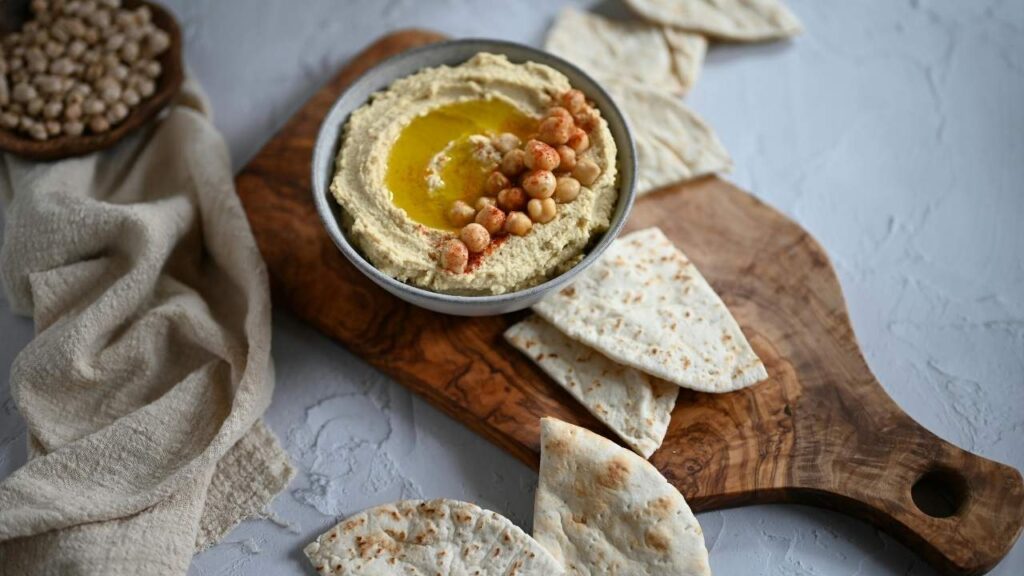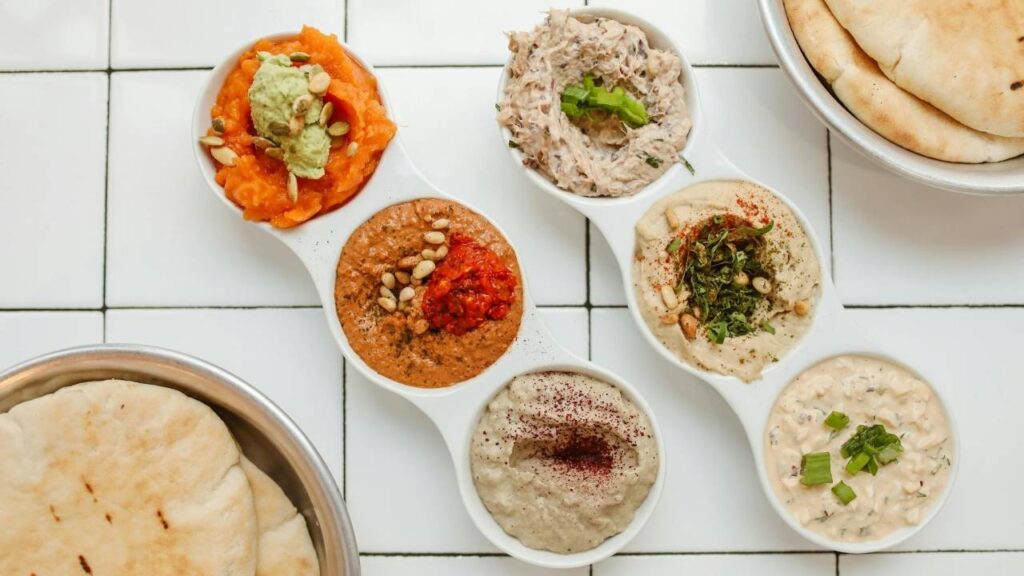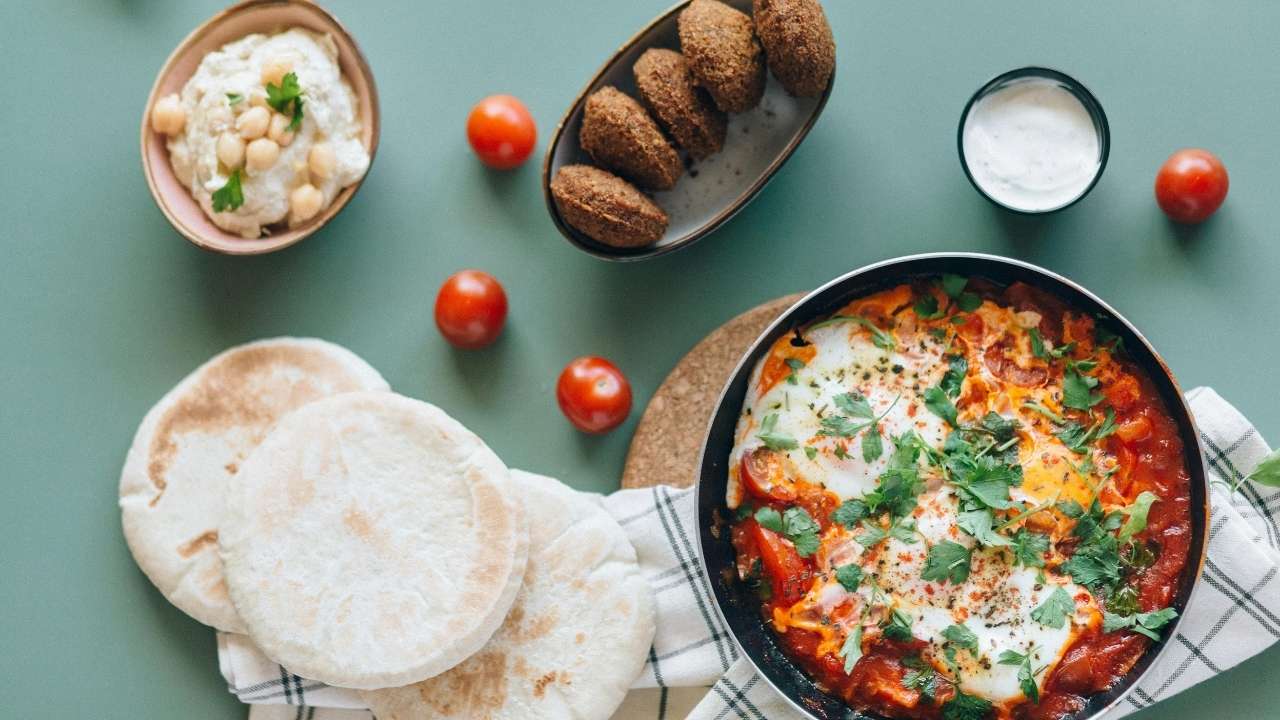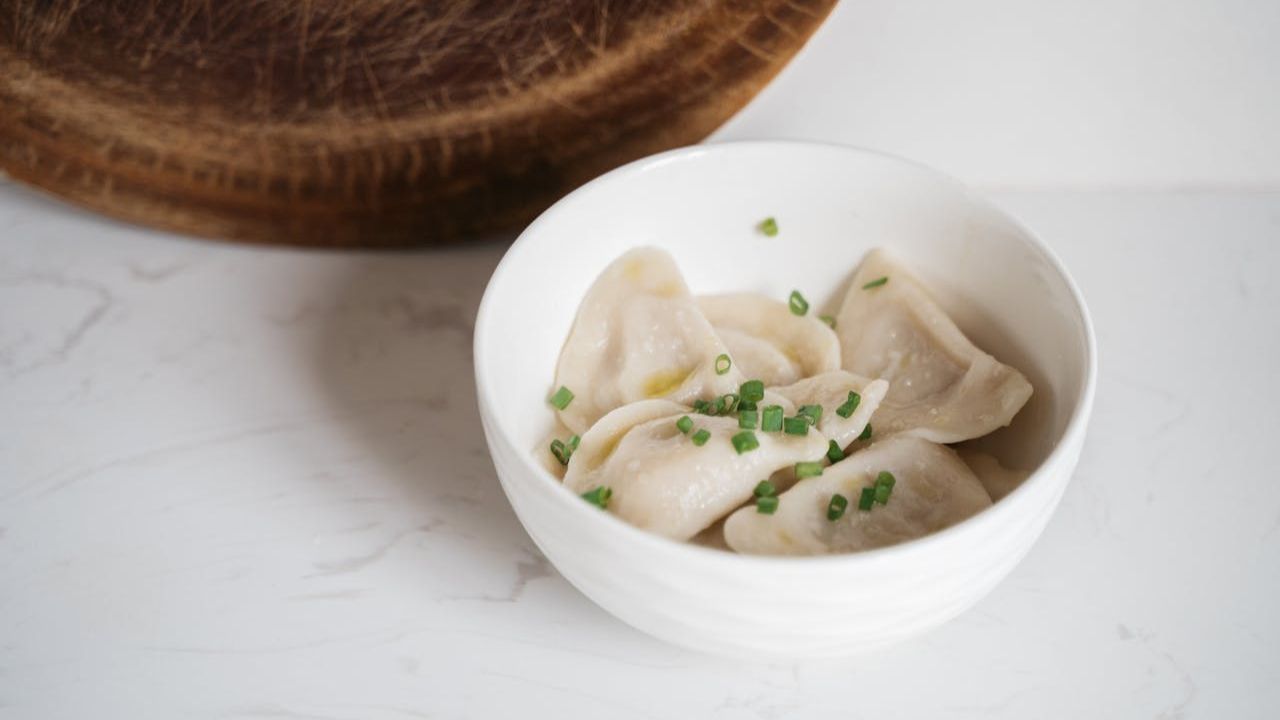One of the first things that comes to mind when you want to eat better is the bread in your pantry. Is pita good for you? This simple, round flatbread is a staple in Middle Eastern and Mediterranean cuisines. Its unique pocket and soft texture have made it popular all over the world. It’s possible for pita bread to be a healthy part of your diet, but the answer isn’t as simple as yes or no. Pita bread can be good for you or bad for you, depending on the kind you choose, what you put inside it, and how it fits into your overall diet.
This helpful guide will tell you everything you need to know about the nutrition in pita bread. We’ll talk about the health benefits of whole wheat bread, the main differences between white and whole wheat bread, and how to make it a good choice for your meals. Get ready to learn how this simple bread can be a tasty and healthy addition to your meals that helps with everything from your heart health to your digestion.

Understanding Pita Bread Nutrition Facts
We need to look inside to really answer the question, “Is pita healthy?” The nutritional value of pita bread can change depending on its size and whether it is made with refined white flour or whole wheat flour. A 6-inch whole wheat pita usually has a good mix of nutrients that your body needs. It has about 140 calories, so it’s a reasonable amount to eat with a meal. You will get about 27 grams of carbs for energy, about 6 grams of protein to help you feel full, and about 3 grams of dietary fiber, which is good for your digestion.
Pita is also naturally low in fat; most kinds have less than 2 grams of fat per serving. Pita bread can give you important vitamins and minerals like iron, which helps carry oxygen in your blood, magnesium, which is good for your muscles and nerves, and B vitamins, which help your body turn food into energy. This solid nutritional profile shows that pita bread is more than just empty carbs. When you choose the right kind, it can be a useful part of a balanced diet.
The Potential Health Benefits of Pita Bread
Picking the right pita bread, especially the whole wheat kind, can be good for your health in a number of ways. One of the best things about it is that it helps your digestive system. Whole wheat pita has fiber in it that feeds the good bacteria in your gut. A healthy gut microbiome can help you absorb nutrients better and make problems like constipation less painful. Heart health is another big benefit. Eating whole grains, such as whole wheat pita, has been shown to greatly lower your risk of heart disease and stroke.
The fiber can help lower the levels of LDL (the “bad”) cholesterol and triglycerides in your blood, which is why this is true. If you need to keep an eye on your blood sugar, the fiber in whole wheat pita is a great help. It slows down the digestion of carbohydrates, which keeps your blood sugar levels from going up and down too quickly and gives you steady, long-lasting energy. This can also help you control your weight by making you feel fuller for longer, which stops you from wanting to snack between meals.
Whole Wheat vs. White Pita: What is the Difference?
Choosing between whole wheat and white pita is one of the most important things you can do, and it has a big effect on how healthy your meal is. So, what’s the real difference? Whole wheat pita is made with flour that uses the whole grain kernel, which includes the bran, germ, and endosperm. This means that it keeps all of its natural vitamins, minerals, and fiber. Whole wheat pita has almost three times as much fiber as white pita. A 100-gram serving of whole wheat pita has about 6.1 grams of fiber, while the same amount of white pita has only about 2.2 grams.
This extra fiber is very important for keeping blood sugar levels stable and for good digestion. On the other hand, white pita is made with refined flour. The refining process takes away the bran and germ, which takes away most of the fiber and many important nutrients. Some white pitas have extra vitamins added to them, but they still don’t have as many nutrients as whole wheat. Make sure to look at the list of ingredients when you’re at the store. To make sure you’re getting the real health benefits of a whole grain, look for “whole wheat flour” as the first ingredient.

How to Make Healthy Choices with Pita Bread
Picking whole wheat pita bread at the store is not the only way to enjoy it in a healthy way. One of the simplest and most useful things you can do is to carefully consider what you put in that handy pocket. Instead of frying high-fat meats like gyros or falafel in oil, try putting lean proteins in your pita. Chicken, turkey, or chickpeas that have been grilled are great choices that add protein without adding too much saturated fat. Put as many fresh vegetables as you can on it. Lettuce, tomatoes, cucumbers, and peppers all add crunch, flavor, and a lot of vitamins and fiber.
Don’t forget to eat healthy fats! Adding a little hummus or avocado makes it creamier and helps your body absorb the nutrients in the vegetables. Another important part of success is controlling your portions. Pita bread can be good for you, but eating too many carbs can mess up your diet. One 6-inch pita per meal is a good rule of thumb. Think of your plate as having four sections: half should be filled with non-starchy vegetables, a quarter with lean protein, and the last quarter with your pita.
Pita vs. Other Popular Breads
So, how does pita bread compare to other types of bread that people eat a lot? The table below makes it easy to see the differences at a glance.
| Feature | Whole Wheat Pita | White Pita | Whole Wheat Bread | Naan |
| Calories (per serving) | ~140 | ~165 | Similar to pita | Higher |
| Fiber Content | High (~3-6g) | Low (~1-2g) | High | Low |
| Fat Content | Low (~1-2g) | Low (~1g) | Low | Higher (~5g) |
| Versatility | High (pocket, dipper, wrap) | High (pocket, dipper, wrap) | Moderate (sandwiches, toast) | Moderate (curry companion, flatbread) |
| Key Trait | High fiber, low fat, versatile pocket | Low fat, versatile pocket | High fiber, familiar format | Rich, soft texture from yogurt/butter |
Whole wheat pita is a strong contender because it has a lot of fiber and very little fat. The unique pocket also makes it very useful for making healthy, stuffed meals. Naan is tasty, but it often has yogurt and butter in it, which makes it higher in fat and calories.

Smart Tips for Selecting and Storing Pita
It’s easy to find the healthiest pita bread at the store if you know what to look for. Becoming a label reader is your most important job. Always look at the list of ingredients and make sure that “whole wheat flour” or “whole grain” is the first thing on it. This makes sure that the product is mostly made with whole grains, which are good for you. Next, look at the panel that shows the nutrition facts. It is a good idea to look for a pita that has at least 3 grams of fiber in each serving. Also, watch out for the sodium content, because some breads can have a lot of salt.
If you store your healthy pita correctly, it will stay fresh and tasty. You can keep pita bread in a cool, dark cupboard at room temperature for a few days. It freezes very well, so you can store it for a long time. Put the pitas in a bag that can go in the freezer, push out all the air, and seal it tightly. You can take one straight from the freezer and put it in a toaster or oven when you’re ready for one. This way, you’ll always have a healthy base for a quick meal on hand, which will help you stay away from less healthy options at the last minute.
Being Aware of Potential Drawbacks
There are many good things about pita bread, but it’s only fair to talk about a few possible bad things so you can make an informed decision. The sodium content is the main problem for a lot of people. If you’ve been told to eat less salt, be careful with store-bought pitas because some of them can have a lot of salt in them. You can find a lower-sodium option by looking at the nutrition label and comparing different brands. People with Irritable Bowel Syndrome (IBS) or who are sensitive to gluten may have trouble with regular pita bread made from wheat flour.
Some people may have symptoms like bloating, gas, and stomach pain after eating wheat because it is high in FODMAPs, a type of carbohydrate. You do have other options if you can’t eat gluten. You don’t have to miss out on pita bread because a number of companies now make gluten-free versions using a mix of flours like brown rice, sorghum, and tapioca starch. The golden rule for any food is to eat it in moderation. When eaten as part of a healthy, varied diet, pita bread is a good choice.

Conclusion: So, Is Pita a Healthy Choice?
What is the final answer after we looked into it deeply? Is pita good for you? The clear answer is yes: pita bread can be a very healthy and smart choice for most people. We’ve learned that the key is in the details. Choosing a whole wheat pita instead of a white one gives you a lot more fiber, vitamins, and minerals that are good for you. This easy change can help keep your heart healthy, keep your blood sugar levels steady, and support good digestive health.
Keep in mind that what you put on your pita is just as important as the pita itself. Adding lean proteins, healthy fats, and a variety of vegetables makes it a full, balanced, and filling meal. It’s always a good idea to watch your portions and sodium levels, but you can be sure that whole wheat pita bread is a healthy and flexible part of your health journey. You can eat that tasty pita pocket and know that you’re doing something good for your health.
FAQ’s
1. Is pita bread healthier than regular bread?
Yes, in a lot of cases, especially when you compare a whole wheat pita to two slices of regular white bread. A whole wheat pita usually has more fiber and fewer calories and carbs than two slices of white bread. A pita might be a better choice for making a balanced meal than whole wheat bread because it is portion-controlled and has a pocket that can hold a lot of different foods.
2. Can I eat pita bread if I am trying to lose weight?
Of course! Pita bread can help you lose weight. It has fiber and protein that make you feel full and satisfied, which can stop you from eating too much. The key is to pick whole wheat pita for the extra fiber, keep an eye on how much you eat (one is enough), and fill it with healthy things like grilled vegetables and lean protein.
3. Is pita bread good for people with diabetes?
If you have diabetes, whole wheat pita is a better choice than white pita. Whole wheat has more fiber, which helps slow down how quickly sugar gets into your blood. This stops blood sugar from rising quickly. As always, you should keep an eye on your blood sugar and eat pita as part of a balanced meal that includes protein and healthy fats.
4. What is the healthiest way to eat pita bread?
If you want to eat pita in a healthy way, start with whole wheat. Then, use it to carry foods that are high in nutrients. Fill it with lean protein like grilled chicken or fish, and add a lot of fresh vegetables like spinach, cucumbers, and tomatoes. Adding a spoonful of hummus or a drizzle of tahini is a tasty and healthy way to add fat.
5. Does pita bread have a high glycemic index?
White pita bread has a medium glycemic index (GI), which means it can raise blood sugar levels a little bit. Whole wheat pita bread, on the other hand, has a lower glycemic response because it has more fiber. The best way to keep your blood sugar stable is to eat whole wheat and pair it with protein and fat.



